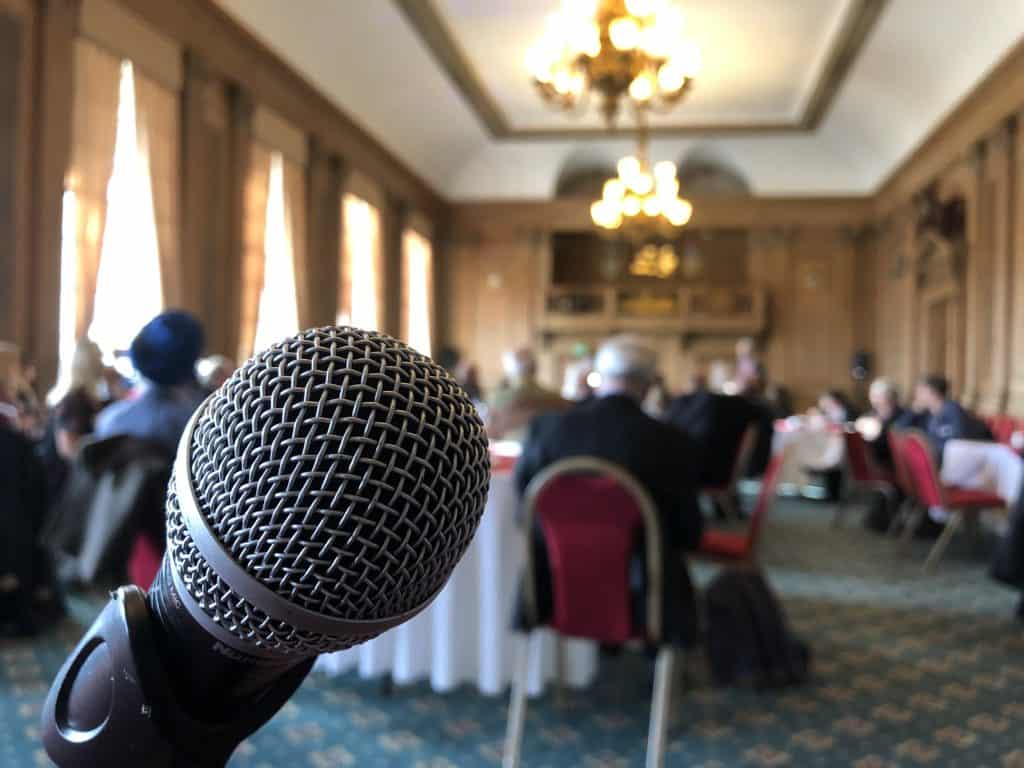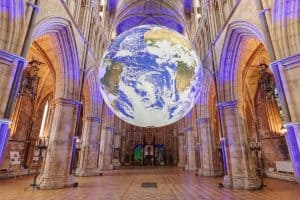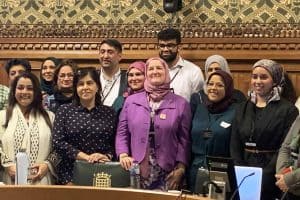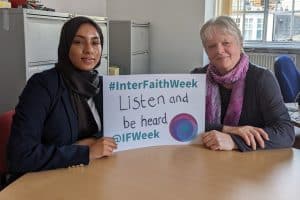By Ruth Peacock
Leeds is a richly diverse city with Polish Catholics, Caribbean Pentecostals, post-partition Muslims, Hindus and Sikhs from south Asia and east Africa and more recently people from Afghanistan, arriving since World War Two.
The importance of understanding the demographics of the city to deliver healthcare, education and to reach out to communities, became clear during the pandemic.
The picture of Leeds as a vibrant mix of cultures and faiths was displayed and explained at the Religion Media Centre’s Creating Connections event in the Civic Hall on 14th October.
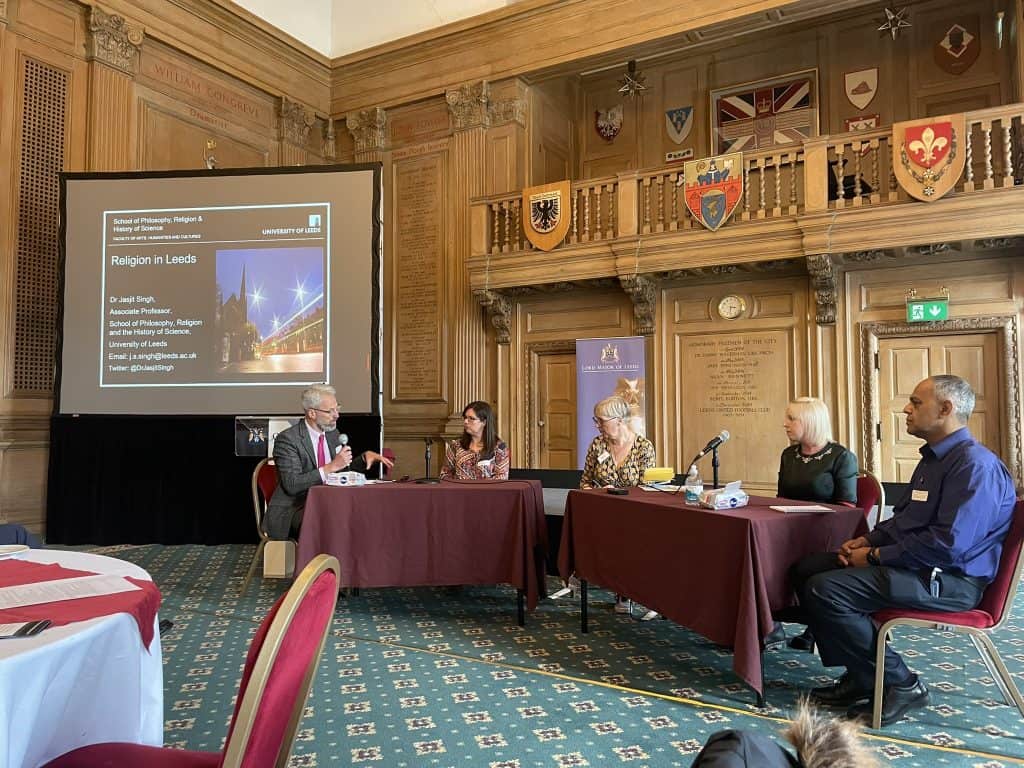
Journalists present said that communities and organisations had come together much more through the hardship of lockdowns and the media’s links with the community had been strengthened through the pandemic.
This was the first event in the Creating Connections series across five cities in England this autumn. The purpose is to bring together representatives from religious groups and the media to enhance understanding, build new relationships and find great stories.
Leeds City Council supported the project, providing the banqueting suite in the Civic Hall for the occasion and the lord mayor, Asghar Khan, said he hoped it would result in an increased understanding of the religious landscape of “this great city”, in the interests of social cohesion in a diverse community.
Dr Jasjit Singh, an associate professor at Leeds University, set the context, explaining the rich diversity of religions in the city. He said that the religious landscape of Leeds was close to the UK national average, with — according to 2011 census data — 56 per cent Christian, 28 per cent non-religious and the rest divided among other world religions. He believed the new census data, expected to be published in April 2022, would show a broadly similar picture, with non-religion expected to rise but minority religions staying the same.
Leeds was also, he revealed, the UK capital of the Star Wars-inspired Jedi Knight religion, identified in the 2011 census.
He displayed maps showing the main concentrations of world faiths in city districts: vital information, he said, especially in public decision-making.
Dr Singh highlighted the long history of community focused research at the University of Leeds, including the Community Religions Project, established in the 1970s, through which students have investigated every area of Leeds, examining the presence of religion.
In a media panel discussion, Laura Collins, the editor of the Yorkshire Evening Post, spoke of the “vital” work in reporting communities. In the pandemic, she said, locked-in reporters had to find new ways of finding out what was going on and this meant they had connected with communities more than ever before. This was part of a wider story of communities and organisations coming together in Leeds to support one another.
Now the world was opening up again “it’s really important for us as a local paper to make sure that we are out there and we are representing them and we are reflecting the voices of our city”, Ms Collins said.
She reflected that trust in local journalism had developed through the difficulties and many people turned to it to find out what was happening. She hoped this would continue, but fake news and national journalists “wreaking havoc” on a story meant that local journalists had to pick up the pieces when they left.
“It’s basically pushing an open door. We are here. We don’t know everything going on in the city. We need people who are in the same community to put their hands up and tell us what’s happening.”
– Laura Collins, Editor of Yorkshire Evening Post
Elizabeth Fordham, an ITV planning producer in Leeds, said it had a duty to represent all communities and a diversity panel met quarterly to identify themes and offer stories. “We’re working really hard to try to make sure we represent every single person in this region and religion plays a huge part in that,” she said. Journalists want to tell people stories and for television it helped if a story was strongly visual.
Andrew Edwards, from BBC Radio Leeds, saw an increasing interest in spirituality as people contemplated big questions and faced loneliness. He felt a closer connection with listeners during the lockdowns through radio. The BBC had started “doing formal faith”, with reflections, comments and religious services.
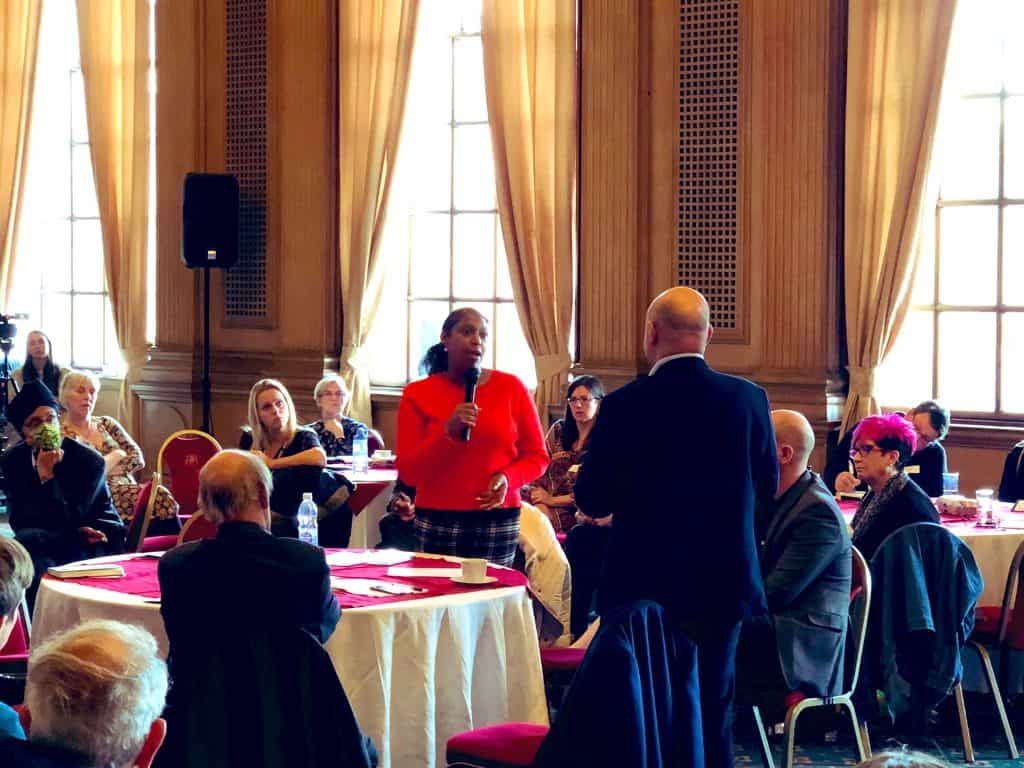
Jabbar Karim, managing director of community station Fever FM, agreed that more people wanted religious programming because of their fear in the pandemic. The station reflected all major faith traditions, but their main function was to issue advice on how to keep safe and it helped that they were embedded in the community and trusted.
The media panel discussion, chaired by Rosie Dawson, ended with Laura Collins advising the religious representatives in the room: “It’s basically pushing an open door. We are here. We don’t know everything going on in the city. We need people who are in the same community to put their hands up and tell us what’s happening.”
In the second half of the meeting, representatives from religious groups working on the front line of services in Leeds, offered perspectives and stories for the media to pursue.
Here are 14 stories:
David Midgley, from Jamyang Buddhist Centre Leeds, said climate change was fundamentally a spiritual problem and nothing has been done because the fundamental driver of society was material gain. Pilgrims from Spain walking to Cop26 in Glasgow were travelling through Leeds city centre the following day. At the weekend, faith buildings all over the world would display banners supporting action on climate change — one would be put on the town hall.
Dr Jatinder Singh, from the Environment Agency, said protection and care of the environment was a key element in Sikh philosophy. There was a lot of micro-level support for environment campaigns, for example the planting of 550 trees in Leeds and an initiative among the Sikh community to cut down the use of plastic for big social occasions.
Sarbjit Kaur, from Sikh Elders, spoke of the faith’s strong communities where families supported one another protecting elderly people, especially the lonely, during the pandemic. They also care for mental health needs and wellbeing.
The Rev Dr Carol Tomlin, principal and director of studies at Kingdom School of Theology, spoke of her duties as a carer for her mother and brother and said previously she had no insight into the demands of caring, even when she was a pastor.
Professor Mahendra Patel, pharmacist and academic, said it was vital to understand beliefs, faiths and religions to deliver healthcare and education, and to reach out to communities, especially during a pandemic when health advice must be given. But it was also important for example, to understand rules about fasting — when, where, for how long — so that correct medication and advice could be given.
Dr Mohammed Sattar, who specialises end-of-life care, said faith was really important as a motivation for those who worked in the service of others. As a GP, he has Muslim and Jewish patients and needs to understand how people battle with faith as they approach the end of life. It is also important to understand rituals after death and to allow speedy action for those whose rules require a burial within 24 hours.
The Rev Dr Stuart Burgess, former chairman of the Anchor Hanover Housing Association, former rural advocate to the prime minister and a Methodist minister, appealed for housing associations to ensure that every village should provide 12 or 15 homes for key workers such as teachers, doctors, social workers and carers and said this was an achievable goal. Housing associations should be about creating safe, strong communities and good-quality homes.
Jackie Crouch, an outreach worker at the Joanna Project, which helps women with multiple disadvantages such as a history of drug misuse or sex working, said she found working with the charity rewarding. As a social worker beforehand, she was frustrated by statutory constraints, but in her Christian foundation charity, she can offer emotional support and give hope.
Gillian Holding, a Jewish artist, said her paintings were about sanctifying the everyday and portraying the contradictions of life; Shaeron Caton Rose, a Christian artist, has created an art meditation at Mill Hill chapel in Leeds and offers art wellbeing retreats in the city; and Fauzia Khan, a Muslim artist, said her art was a reply to Islamophobia which she had met in almost every aspect of her life.
Leo Joslin, formerly station manager of the Leeds Student Radio, said everyone he knew has lost somebody to mental health and for men aged 24 to 40, the most likely cause of death was suicide.
Ben Humphris, a religious studies teacher at the Grammar School at Leeds, said there were two main benefits for young people associated with religion: one was worship where once a week you “paid witness to a sense of the good”; another was relationships, being part of a community often with people of different ages and backgrounds, which in today’s fluid society with changes of jobs and location, could keep a person steady. He also spoke of the importance of understanding different world views, an exploration which engages young people in schools.
Sophia Hartley, former health and wellbeing officer at Leeds University, spoke about “eco anxiety” as young people fear for the future of the planet to the extent that they are questioning whether to have children. Young people are individuals with different ideas and circumstances and she appealed to the media not to treat them as a homogenous group.

